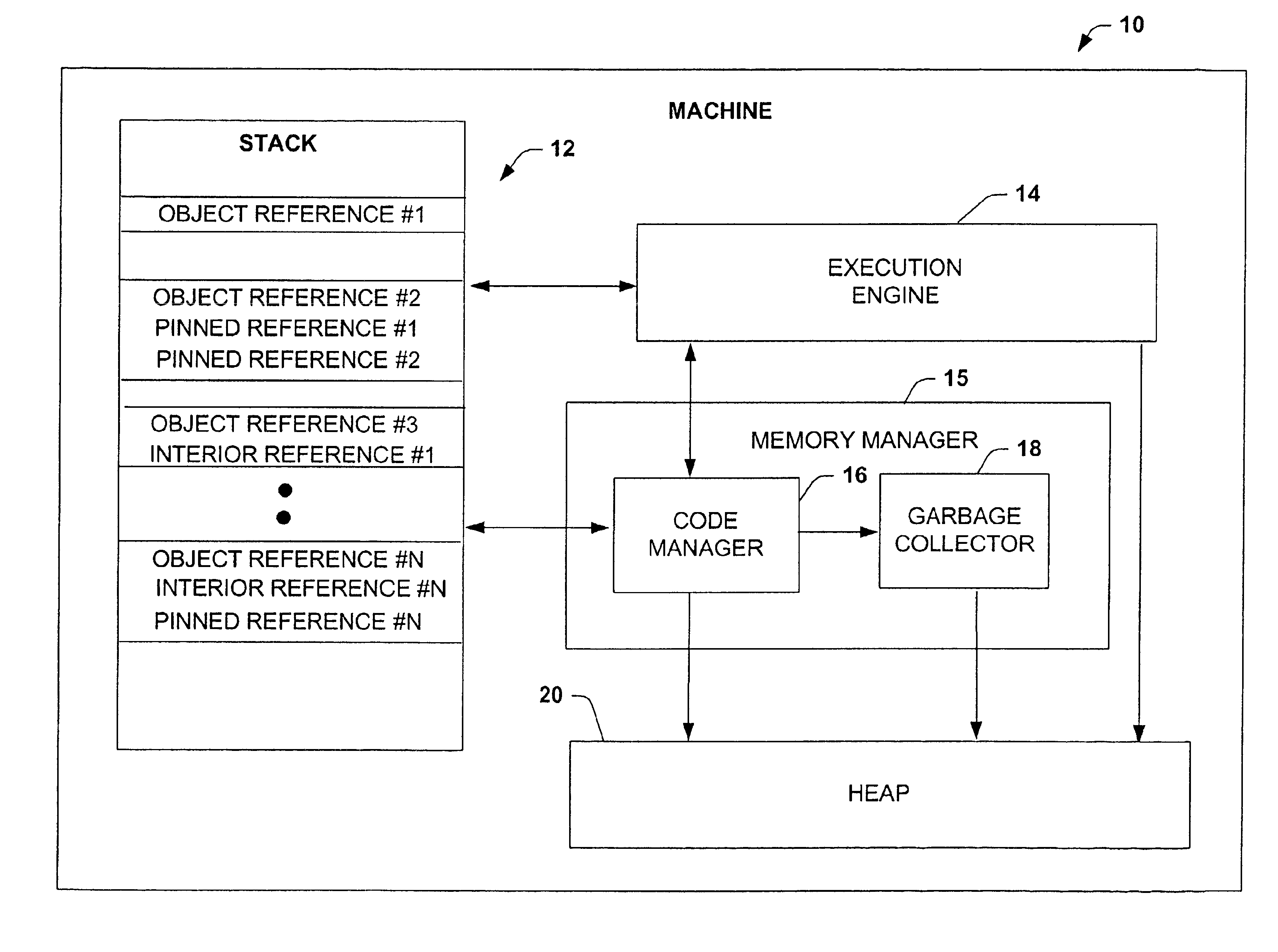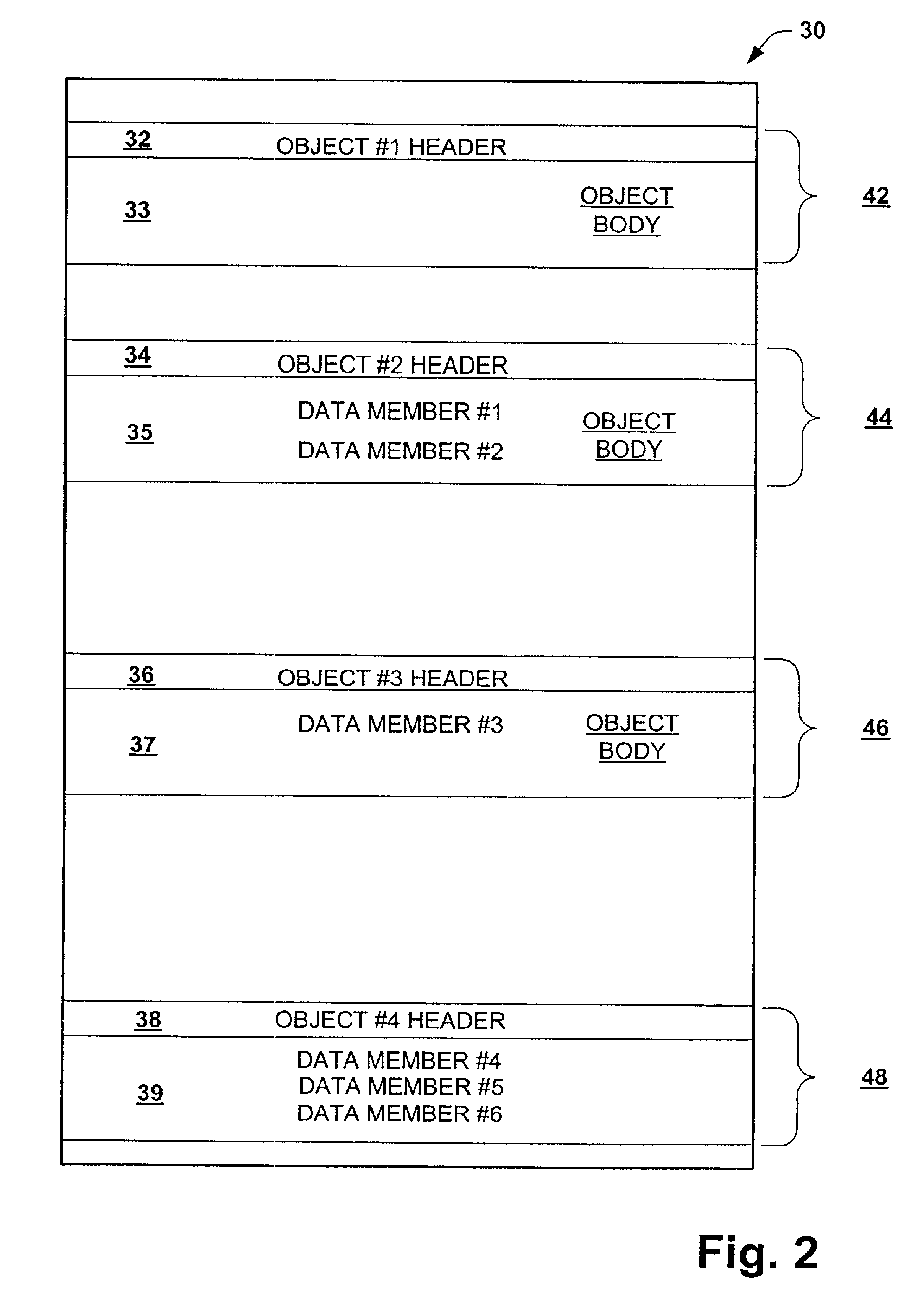Declarative pinning
a technology of pinning reference and pinning data, which is applied in the direction of memory allocation/allocation/relocation, data processing applications, instruments, etc., can solve the problems of unmanaged or unsafe programming languages, corresponding heap segments become inaccessible to the program, and the program cannot retrieve from or write data to an inaccessible heap segment. , to achieve the effect of efficient pinning referen
- Summary
- Abstract
- Description
- Claims
- Application Information
AI Technical Summary
Benefits of technology
Problems solved by technology
Method used
Image
Examples
Embodiment Construction
[0026]The present invention is now described with reference to the drawings. General purpose programming languages and other programmed systems often use references to locate and access objects. These objects can contain references to data members, such as integers, floating point numbers, character fields or other objects. These objects can be either managed or unmanaged. During execution of unmanaged code, managed data structures can be used. The present invention declares references to managed objects or data structures as pinned during execution of unmanaged calls. The present invention is described with reference to a system and method for efficiently pinning references to a managed heap. The system and method allow for references (e.g., local variables) to managed objects to be declared as pinned during unsafe conditions (e.g. a call to unmanaged code that manipulates managed data). Upon invocation of a garbage collection, the references and pinned references are passed to a g...
PUM
 Login to View More
Login to View More Abstract
Description
Claims
Application Information
 Login to View More
Login to View More - R&D
- Intellectual Property
- Life Sciences
- Materials
- Tech Scout
- Unparalleled Data Quality
- Higher Quality Content
- 60% Fewer Hallucinations
Browse by: Latest US Patents, China's latest patents, Technical Efficacy Thesaurus, Application Domain, Technology Topic, Popular Technical Reports.
© 2025 PatSnap. All rights reserved.Legal|Privacy policy|Modern Slavery Act Transparency Statement|Sitemap|About US| Contact US: help@patsnap.com



